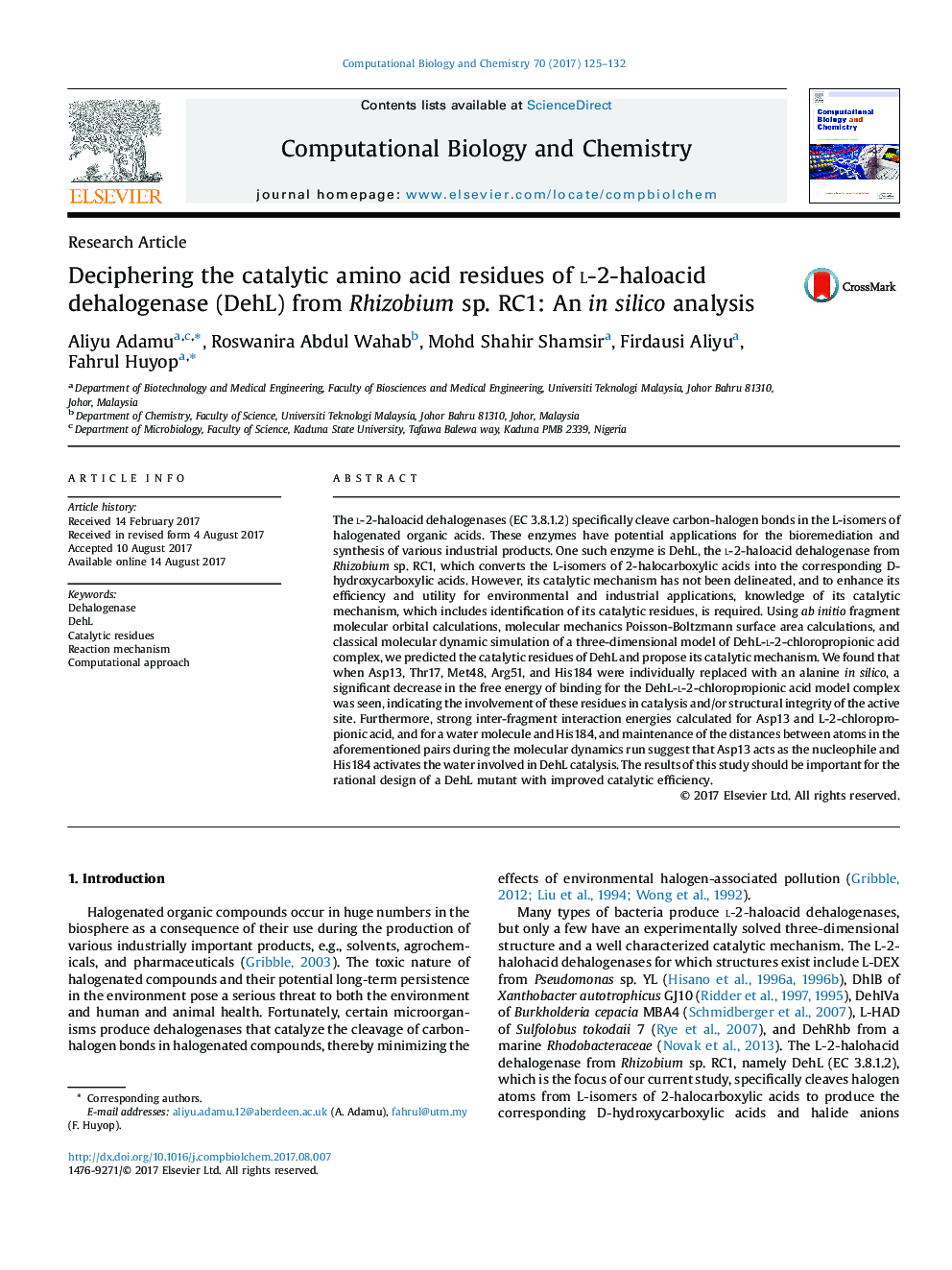| Article ID | Journal | Published Year | Pages | File Type |
|---|---|---|---|---|
| 4752593 | Computational Biology and Chemistry | 2017 | 8 Pages |
â¢DehL is of high interest due to its potential applications in bioremediation and in industries.â¢Identification of its important catalytic residues is key for the enzyme engineering to enhance performance.â¢Replacement of DehL Asp13, Thr17, Met48, Arg51 or His184 may significantly affect the catalytic ability of the enzyme.â¢DehL catalyses dehalogenation via similar mechanisms as the other l-2-haloacide dehalogenases.â¢In DehL catalysed dehalogenation reaction, Asp13 serves as the nucleophile while His184 activates the catalytic water.
The l-2-haloacid dehalogenases (EC 3.8.1.2) specifically cleave carbon-halogen bonds in the L-isomers of halogenated organic acids. These enzymes have potential applications for the bioremediation and synthesis of various industrial products. One such enzyme is DehL, the l-2-haloacid dehalogenase from Rhizobium sp. RC1, which converts the L-isomers of 2-halocarboxylic acids into the corresponding D-hydroxycarboxylic acids. However, its catalytic mechanism has not been delineated, and to enhance its efficiency and utility for environmental and industrial applications, knowledge of its catalytic mechanism, which includes identification of its catalytic residues, is required. Using ab initio fragment molecular orbital calculations, molecular mechanics Poisson-Boltzmann surface area calculations, and classical molecular dynamic simulation of a three-dimensional model of DehL-l-2-chloropropionic acid complex, we predicted the catalytic residues of DehL and propose its catalytic mechanism. We found that when Asp13, Thr17, Met48, Arg51, and His184 were individually replaced with an alanine in silico, a significant decrease in the free energy of binding for the DehL-l-2-chloropropionic acid model complex was seen, indicating the involvement of these residues in catalysis and/or structural integrity of the active site. Furthermore, strong inter-fragment interaction energies calculated for Asp13 and L-2-chloropropionic acid, and for a water molecule and His184, and maintenance of the distances between atoms in the aforementioned pairs during the molecular dynamics run suggest that Asp13 acts as the nucleophile and His184 activates the water involved in DehL catalysis. The results of this study should be important for the rational design of a DehL mutant with improved catalytic efficiency.
Graphical abstractDownload high-res image (149KB)Download full-size image
